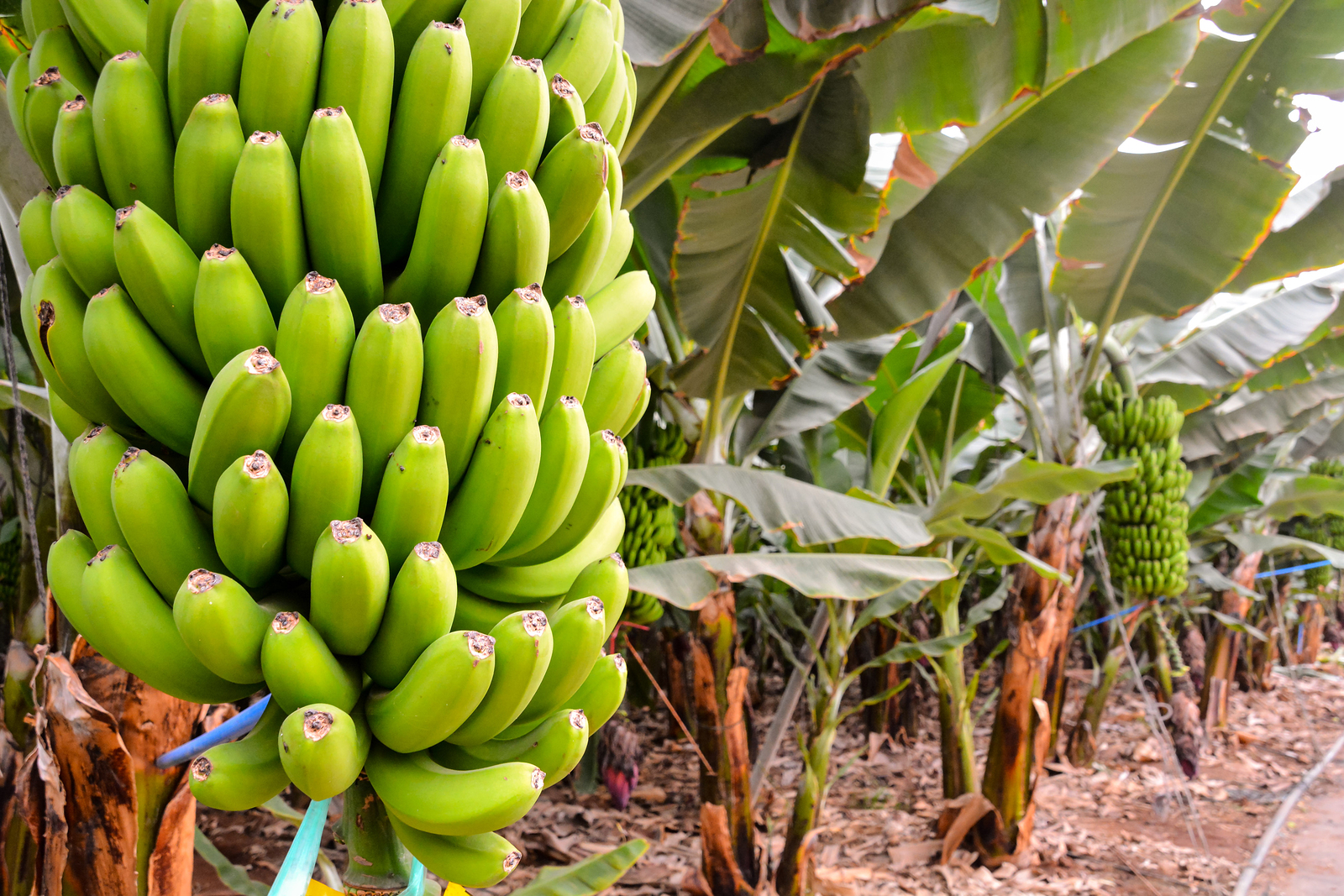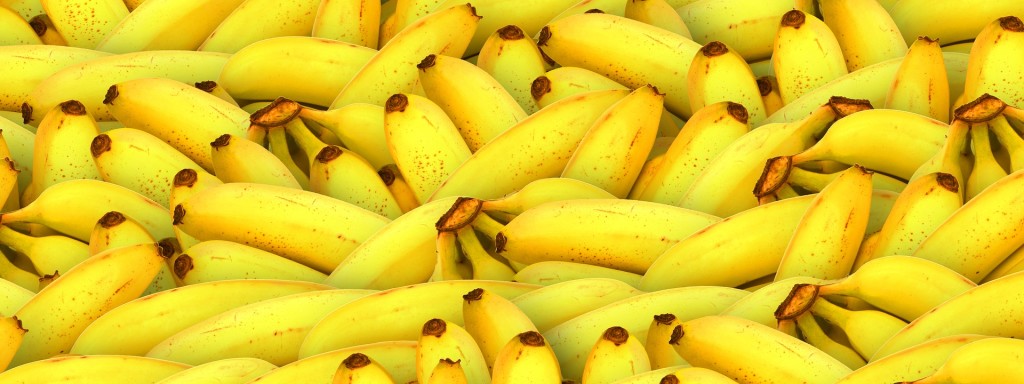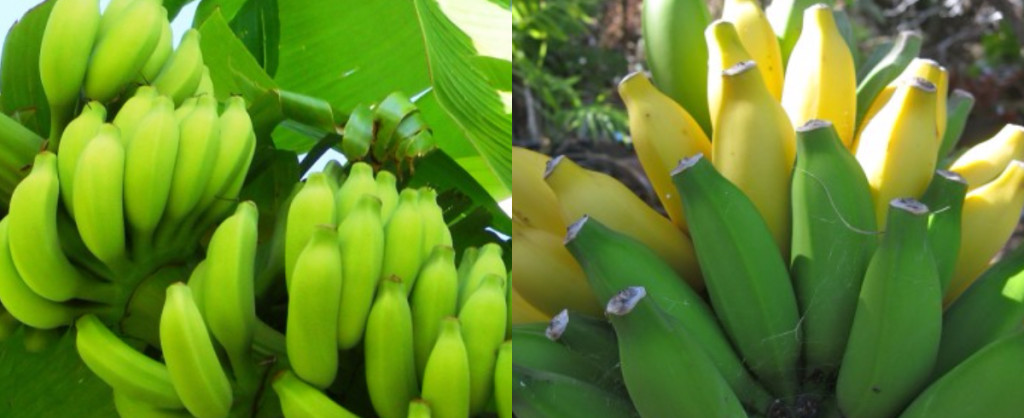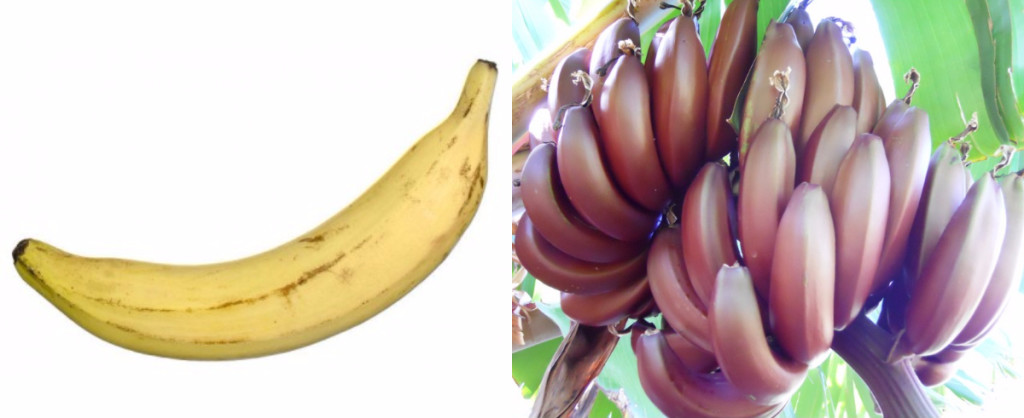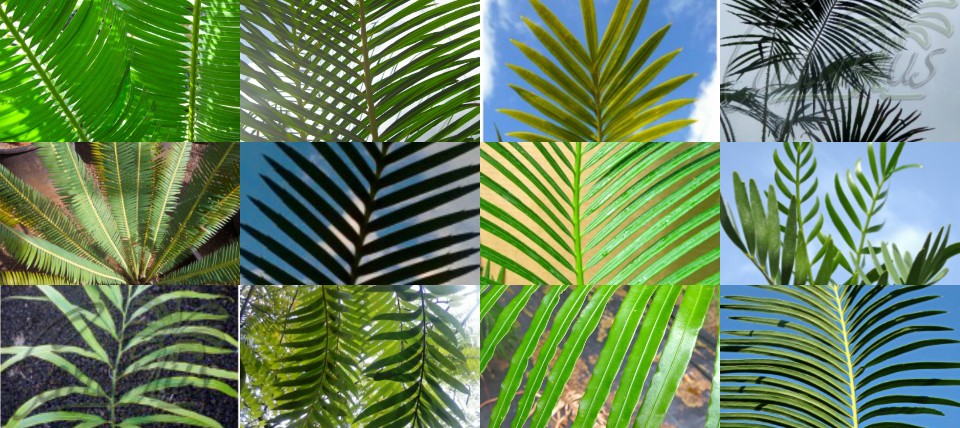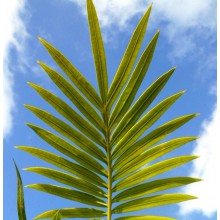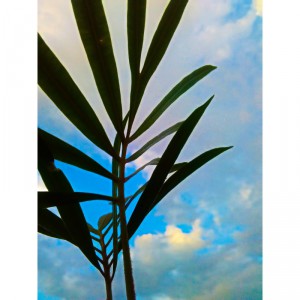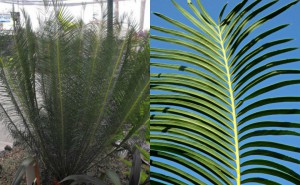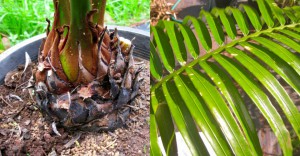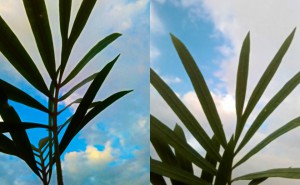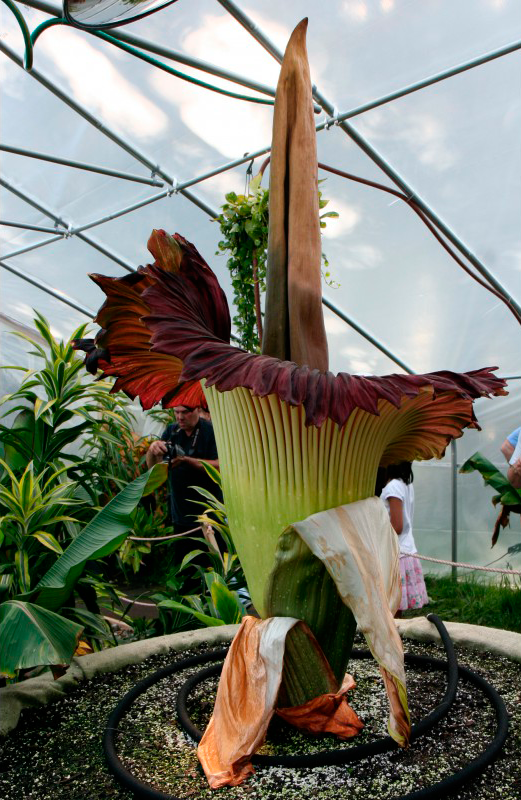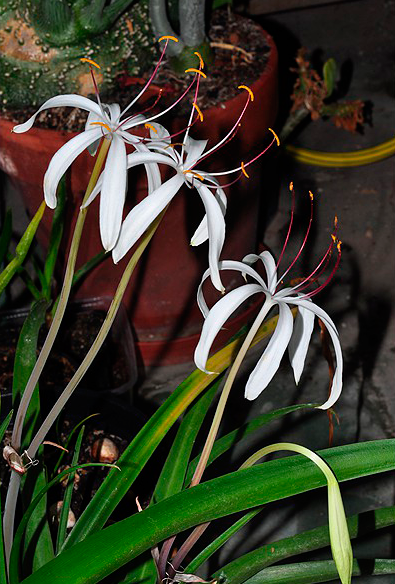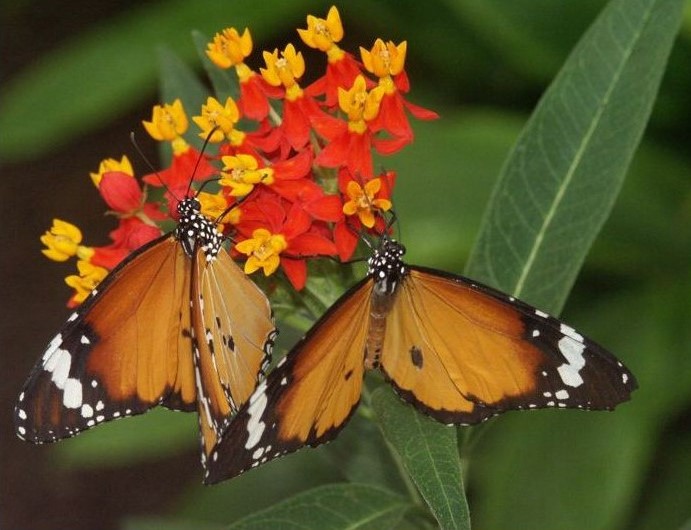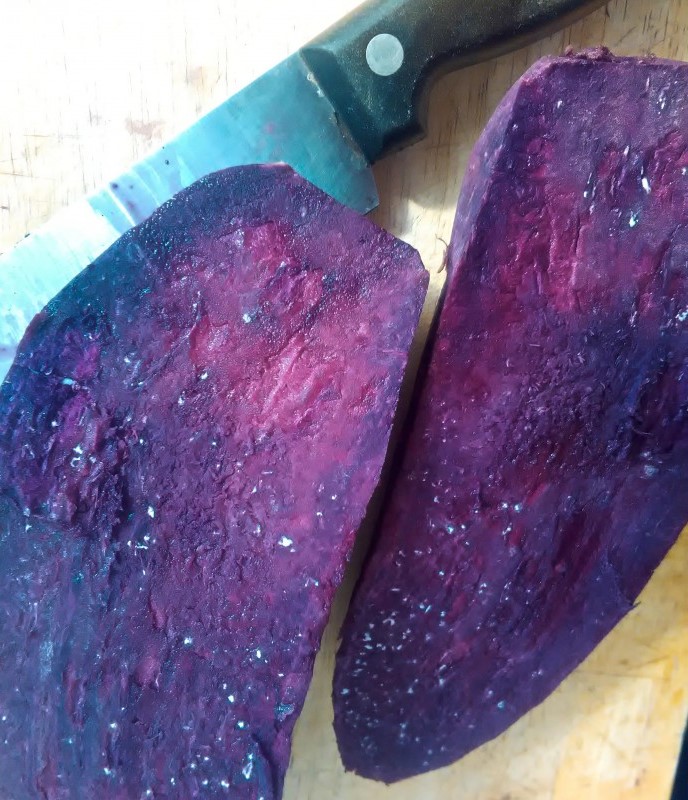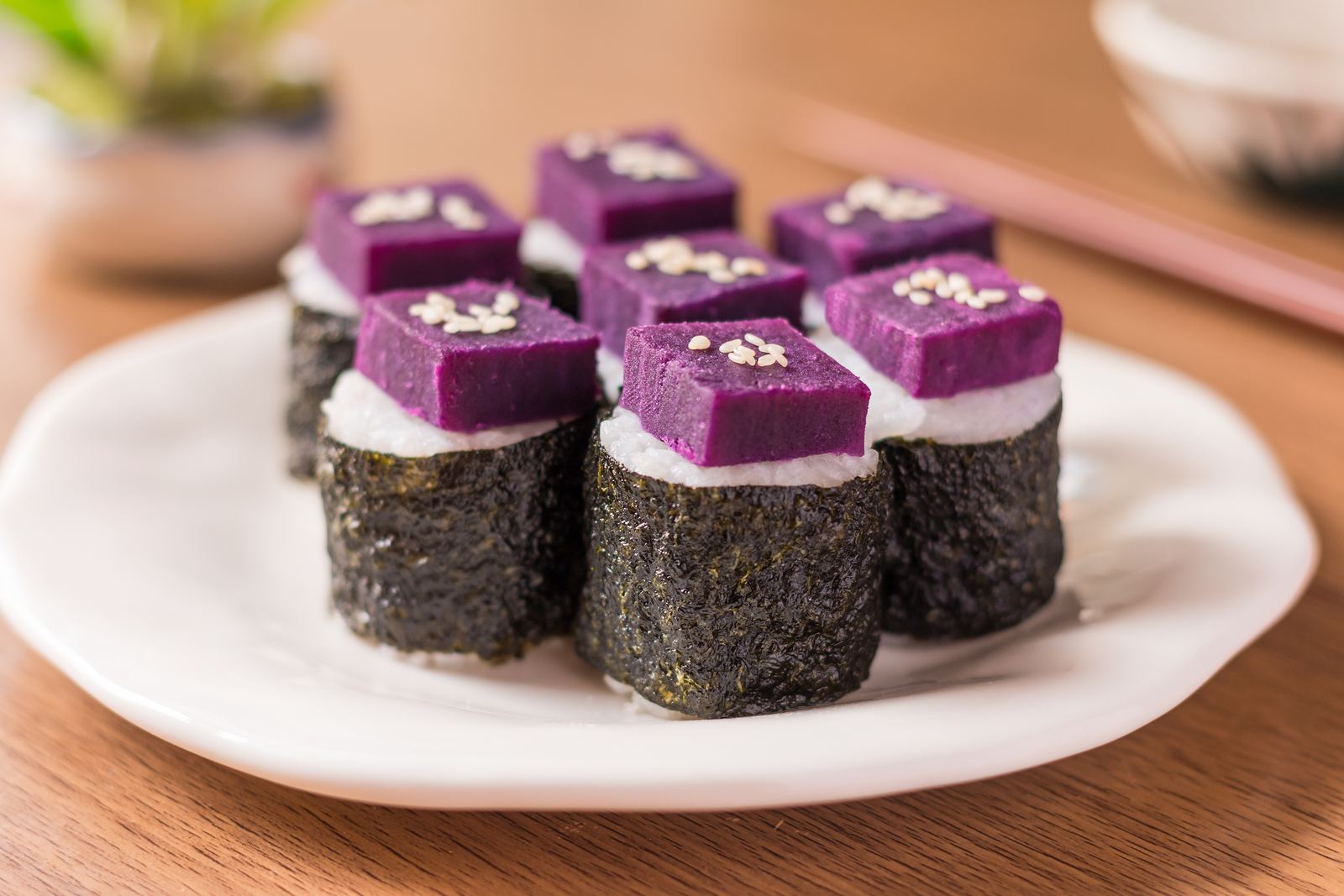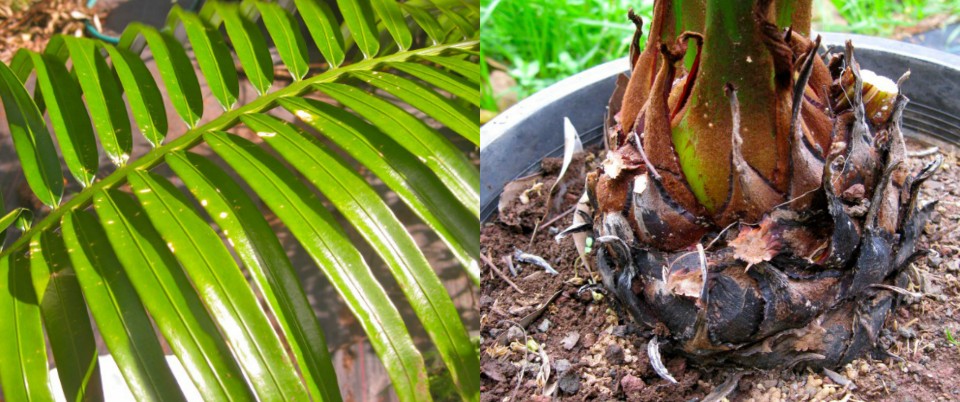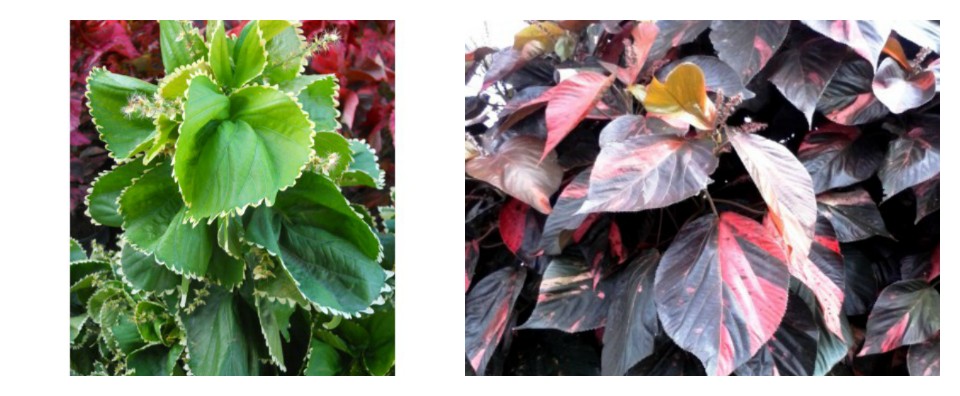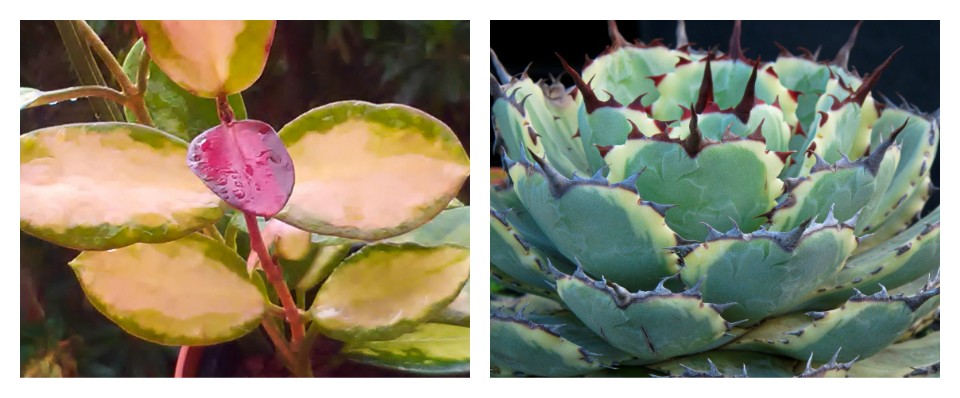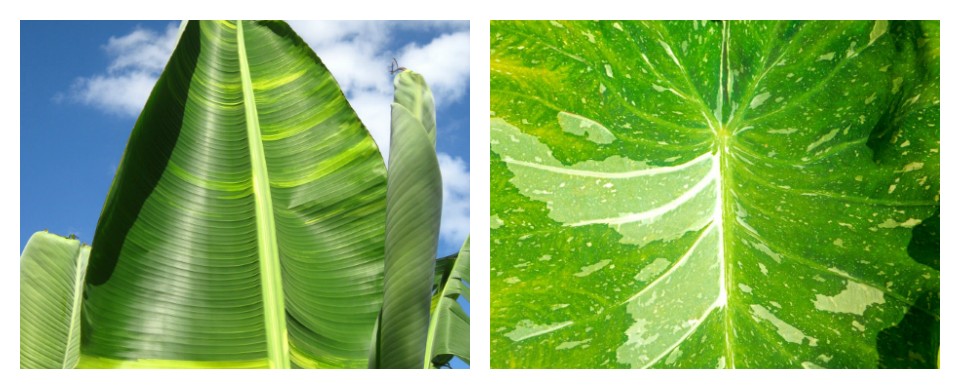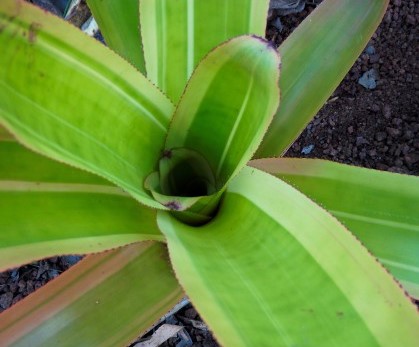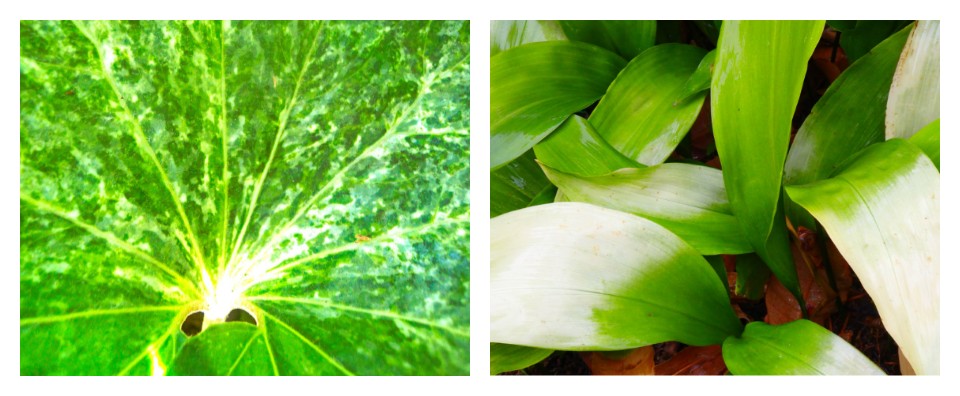Edible cultivars or varieties in the genus Musa are simply called bananas. They are non-woody herbaceous plants in the Musaceae family. They are all seedless domestic crops, not wild plants, and there are more than 600 banana cultivars, originating from Eastern Africa through India to the SE Pacific Islands. Bananas (and plantains), are also considered one of the most important crops in the world, after rice, wheat and corn and others.
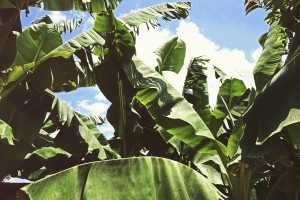 The standard yellow Musa ‘Cavendish’ and similar bananas feed most of the world market, but the “other” cultivars are more by far more interesting and some taste truly different. They can be told apart by their size, colour, taste or way of consumption. Some are eaten raw and ripe, some are cooking-bananas prepared in different ways. The best traditional way to eat them is to steam or boil them in their own skin. The fruits of some cultivars can be eaten both raw and cooked, while a few african cultivars are exclusively planted to make banana beer!
The standard yellow Musa ‘Cavendish’ and similar bananas feed most of the world market, but the “other” cultivars are more by far more interesting and some taste truly different. They can be told apart by their size, colour, taste or way of consumption. Some are eaten raw and ripe, some are cooking-bananas prepared in different ways. The best traditional way to eat them is to steam or boil them in their own skin. The fruits of some cultivars can be eaten both raw and cooked, while a few african cultivars are exclusively planted to make banana beer!
Although most of the cultivars are grown for their fruit, some are also known for their ornamental beauty or ritual value. More ancient cultivars are still being discovered, every few years, especially in Papua and the surrounding islands. Most of them are in risk of extinction, since they are often being replaced by modern cultivars and succumb to new diseases.
Cultivation and growth
Bananas do not have a resting season, so they grow throughout the year. Growth is quite fast, and they need a series of recommendations such as direct sun, low wind, good drainage in the soil and irrigation approximately two or three times a week. A young
Musa will flower after one to two years. Roots are superficial and do not need deep soils, so bananas can be grown in large shallow pots, especially the dwarf varieties. Each cultivar is slightly different but two tricks work for all, in order to make better fruits:
The weight and the sweetness of the bunch depends on the leaf surface and soil nutrients: keep your plant with many leaves and well fed.
Bananas make offshoots and become clumps. Remove most of these offshoots and keep small clumps with few, healthier shoots.
Bananas do not set seeds, so they are propagated by offshoots, removed with few or no roots. From Canarius we ship offshoots with a thick rounded corm, they root quickly in wet and draining soil if temperatures are kept between 20 and 30 C. Commercial cultivars are also micropropagated in vitro for mass production.
Climate and hardiness
When we talk about a tropical plant we think that its cultivation and growth must take place in an ever-warm environment, but many Musa cultivars do stand lower temperatures. Banana trees are classified with A and B letters, referring to their genetic origin. The most cold resistant bananas are the triploids (the ones with three letters) with more B’s, like AAB or ABB. ABB bananas do fairly well in Mediterranean climates with little or no protection in winter.
AA (diploid) bananas and Fehi bananas do better in the tropics with no dry season.
Triploid bananas (AAA, AAB and ABB) grow well also in the subtropics
ABB bananas are typically the most resistant to cold and drought.
Here in the Canary Islands all commercial plantations grow the Cavendish (AAA), but each winter we see how the trees often get dull green and shred many leaves. In turn, other ABB bananas grown in family orchards keep their glossy green and push new leaves through winter.
Our favourite tall hardy bananas
Musa ‘Orinoco’
Musa ‘Blue Java’
Musa ‘Pisang Awak’ (also called Namwah)
Musa ‘Lep Chang Kut’
Musa ‘Saba’
Musa ‘Namwah Dam’
Musa ‘Praying Hands’’
Three good dwarf hardy bananas
Musa ‘Dwarf Brazilian’
Musa ‘Rajapuri’
Musa ‘Dwarf Orinoco’
A fruit with multiple benefits
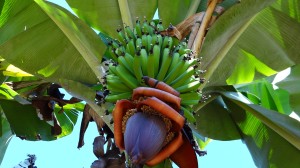 Considered as one of the most complete fruits, its benefits are almost innumerable. First of all, bananas are real food that fills you up in a healthy way. It is rich in carbohydrates, but the truth is that this fruit is a great source of vegetable energy composed of three types of sugars with almost no fat content.
Considered as one of the most complete fruits, its benefits are almost innumerable. First of all, bananas are real food that fills you up in a healthy way. It is rich in carbohydrates, but the truth is that this fruit is a great source of vegetable energy composed of three types of sugars with almost no fat content.
In the ripening process of dessert bananas, starch is reduced from 15-25% to less than 5% and transformed in simple sugars: sucrose, glucose and fructose. Cooking bananas keep most of their starch. All bananas have abundant fibers, potassium, vitamins, minerals and complex aromas with ascorbic, citric and malic acids and a number of volatile compounds typical of each cultivar. Yes, you can live on a banana-based diet, as many people did for thousands of years in SE Asia and the Pacific islands!
This fruit prevents digestive disorders, fights depression or alleviates constipation and it also helps with fluid retention. Many cultivars are rich in provitamine-A, or carotenoids. These bananas usually have a pinkish-orange flesh, and not white as in the Cavendish. Fehi bananas are the kings of provitamine-A and their deep orange flesh has up to 100 times more carotenoids than a standard banana, and more than most fruits in this world.
Banana cultivars in Canarius
In Canarius we have a wide variety of edible Musa cultivars, each with its own characteristics. Here are some examples:
Musa ‘Ney Poovan’: This Indian cultivar bears small fruits with white flesh and a very sweet taste.
Musa ‘Figue Famille’: Characteristic for its curved fruit with a bottleneck apex, this cultivar is a “Pome” banana with a very fine flavour.
Musa ‘Curare Enano’: This is a commercial plantain, with good and regular bunch production. This variety is mainly grown in Guatemala, Costa Rica, Panama, Dominican Republic, Ecuador and Colombia, from where it is exported to the rest of the world.
Musa ‘Figue Rose Naine’: Dwarf red bananas bear fruits with a very unusual purple skin. During their ripening process they will have a dark purple color, passing through red and finally red-and-yellow, when it can already be eaten.
















